| Name | Welsh Flat Olive Tip Cannula |
| Lead Time | Lead time advised within 48 hours of order placement. |
| Competitor | ;601195;60-1195;6011-95;601196;60-1196;6011-96;601197;60-1197;E4414WS;6011-97;6011-95_6011-97; |
| Specialty | Ophthalmology-Cannulas |
| Material Finish | Stainless Steel |
| Grade | Premium Operating Room |
| Units of Measurement | Each |
| Manufacturer | Steknor International |
| Sterility | Non-Sterile |
| Usage | Reusable |
Welsh Flat Olive Tip Cannula
25-gauge Welsh Flat Olive Tip Cannula is a useful tool in cataract procedures. The olive tip of the cannula is designed to create a space for aspiration between the anterior capsule and the surrounding tissue. The shaft of the cannula is available curved right, left, or straight depending on surgical preference.
Description
Reviews (0)
Be the first to review “Welsh Flat Olive Tip Cannula” Cancel reply
Shipping & Delivery
Related products
Kratz Capsule Scraper
shaft w/ sharp top, shaft angled 60 degrees, 12.0 mm tip from angle to tip, 22-gauge, 1/2" Kratz Capusle Scraper is a useful tool in phacoemulsification procedures. The sandblasted tip is designed to scrape the surface of the posterior capsule to remove and cellular debris following aspiration of the nucleus.
Lieppman Cystotome
w/ guard, 22-gauge, 2" (5.0 cm)Lieppman Cystotome is a commonly used tool during cataract phacoemulsification procedures. The cystotome may be used to create a circular incision in the anterior capsule before proceeding with aspiration of the lens. The tool features a guard to prevent extraneous damage to the surrounding iris or globe tissue.
McIntyre Lacrimal Probe Cannula
2" (5.0 cm), 23-gauge McIntyre Lacrimal Probe Cannula is an extremely useful tool in treating tear duct obstructions. The probe may be used to investigate blockage of lacrimal gland damage or more frequently, obstruction of the nasolacrimal duct. The slender profile of the cannula allows access to the small entrances of the duct. Both straight and curved models are available depending on surgical preference.
Bracken Anterior Chamber Cannula
curved, 19-gauge, overall length excluding hub 13/16" (2.1 cm) Bracken Anterior Chamber Cannula is a frequently used tool in cataract extraction procedures. The small gauge cannula is nimble enough to fit into a small limbal incision accessing the anterior chamber. It may be used to aspirate fluid within the anterior chamber exposing the lens capsule. The curved nature of the shaft assures minimal surgical obstruction.
Kelman Cyclodialysis Cannula
19-gauge cannula, marked at 5.0, 6.0, & 7.0 mm, 2 irrigating ports Kelman Cyclodialysis Cannula is a commonly used tool in glaucoma procedures. The cannula is frequently used to irrigate the anterior chamber once a communication has been established between the anterior chamber and the suprachoroidial space. The cannula features a port on both the right and left side depending on surgical preference.
Knolle Anterior Chamber Irrigating Cannula
irrigating ports at 12, 10 & 2 o'clock, 23-gauge, overall length tip to hub 1-1/2" (3.8 cm) Knolle Anterior Chamber Cannula is a frequently used tool in cataract extraction procedures. The small gauge cannula with angled tip is nimble enough to fit into a small limbal incision accessing the anterior chamber. It may be used to aspirate fluid within the anterior chamber exposing the lens capsule.
Lacrimal Cannula – Reinforced Shaft
1.2" (3.1 cm) shaft w/ 2.0 cm reinforced, 23-gauge Lacrimal Cannula is an extremely useful tool in treating tear duct obstructions. The cannula may be used to investigate blockage of lacrimal gland damage or more frequently, obstruction of the nasolacrimal duct. The cannula features a reinforced shaft to prevent bending and kinking during the procedure.
Gimbel Irrigating Cannula
30 gauge u-tip, overall length 28.0 mm (excluding hub)Gimbel Irrigating Cannula is a useful tool during cataract and IOL implantation procedures. The cannula may be used to perfuse fluid for easier manipulation of the IOL or easier access to debride nuclear fragments. The ultra-small gauge facilitates entrance into the lens capsule.

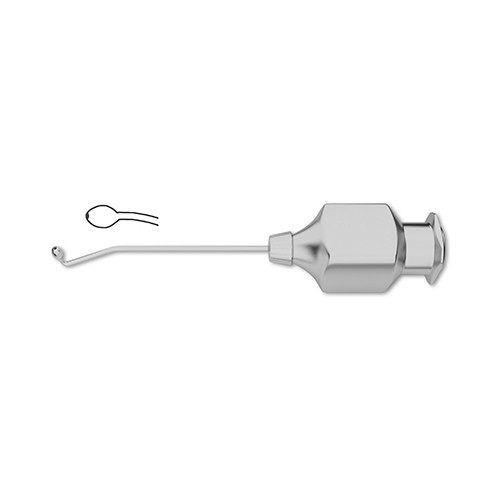
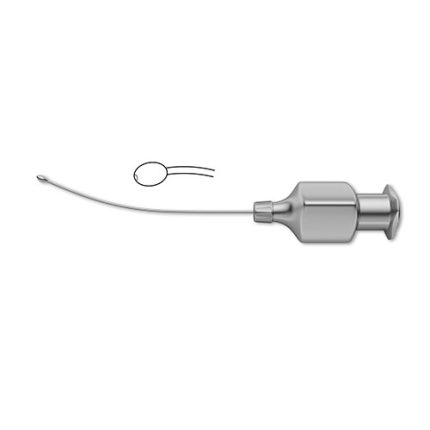



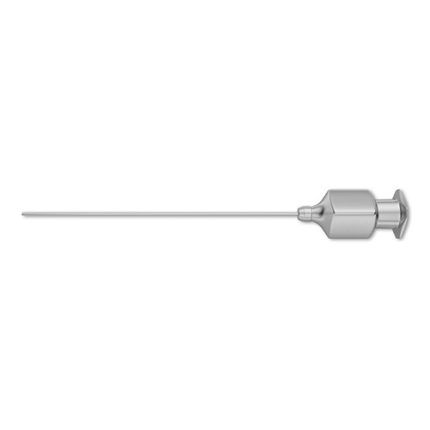

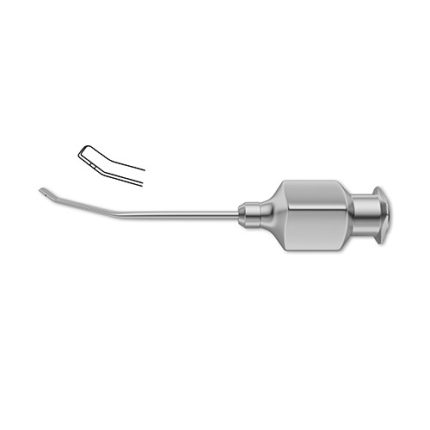
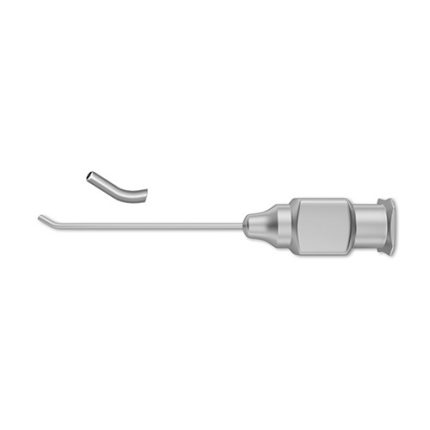



Reviews
There are no reviews yet.